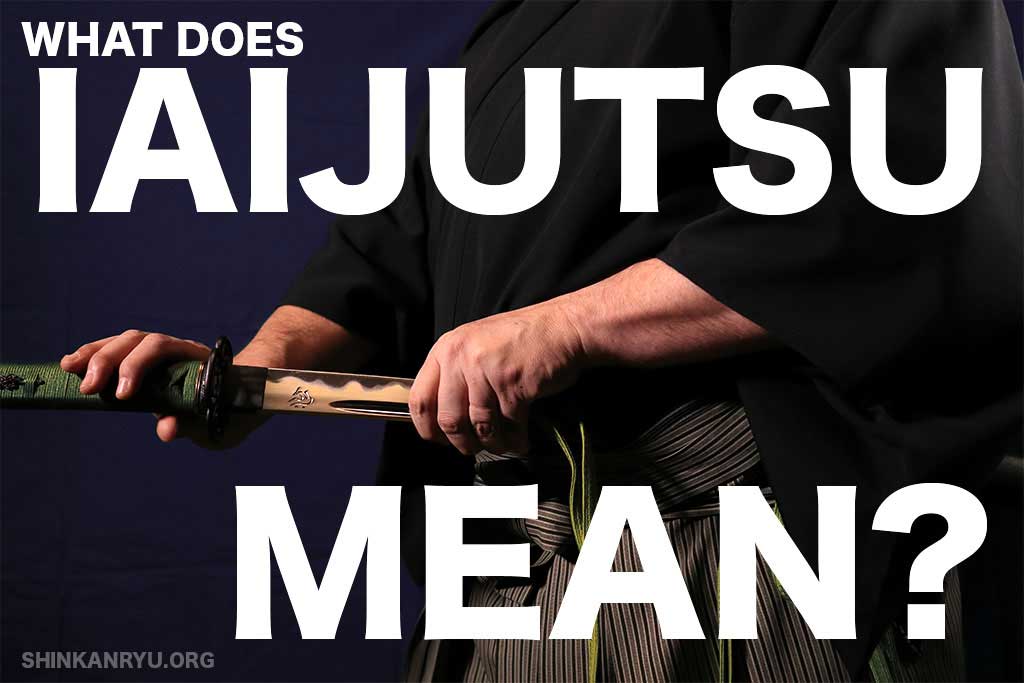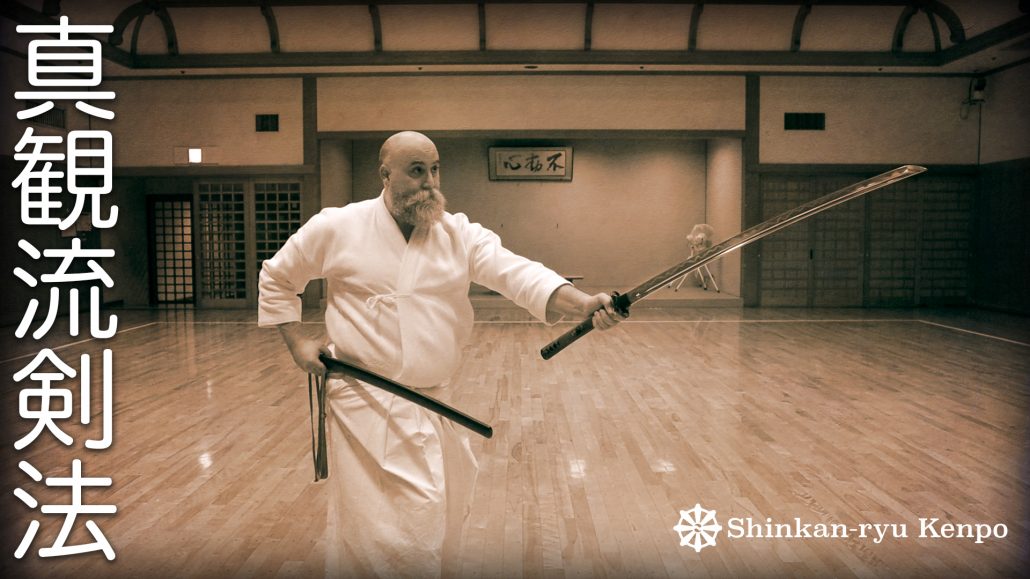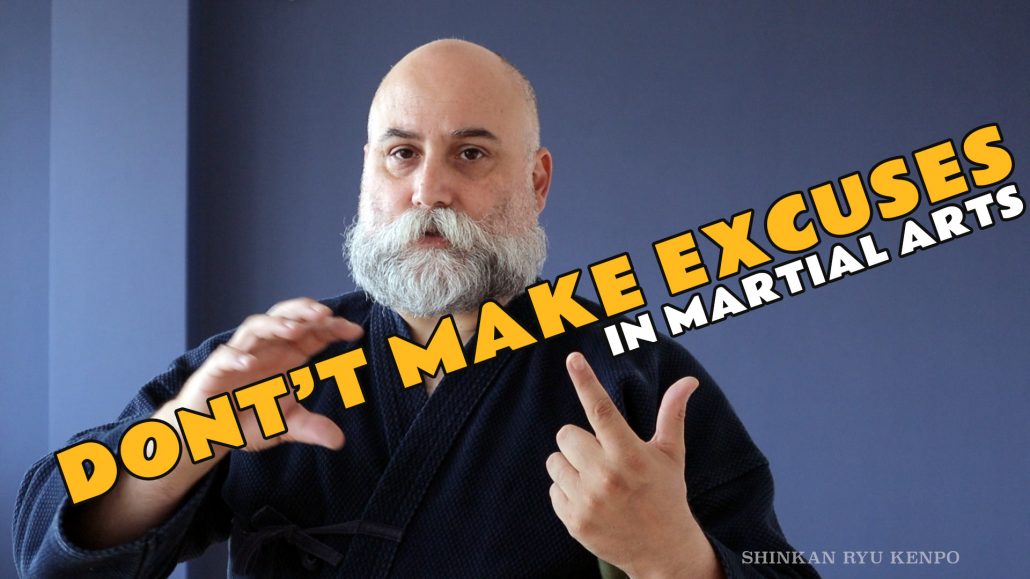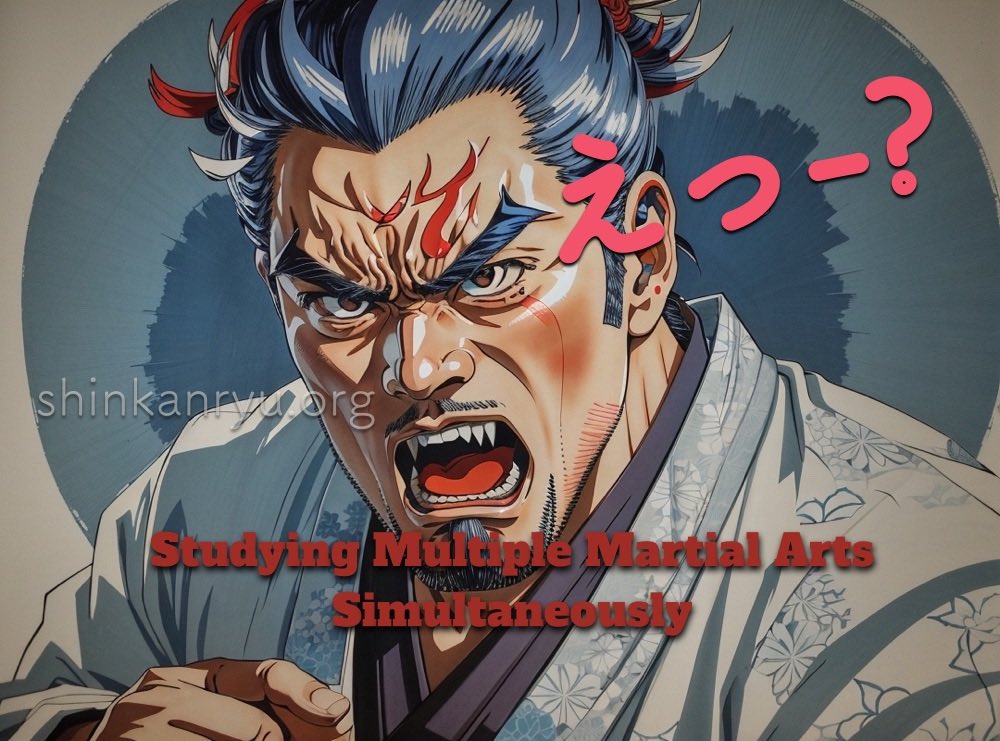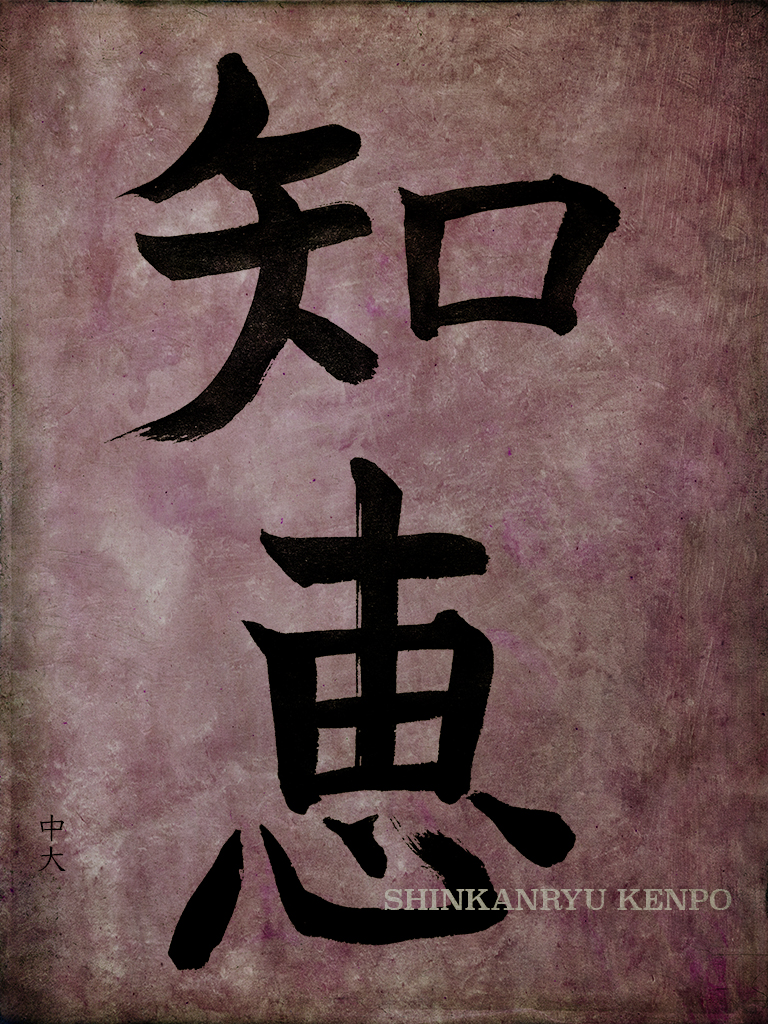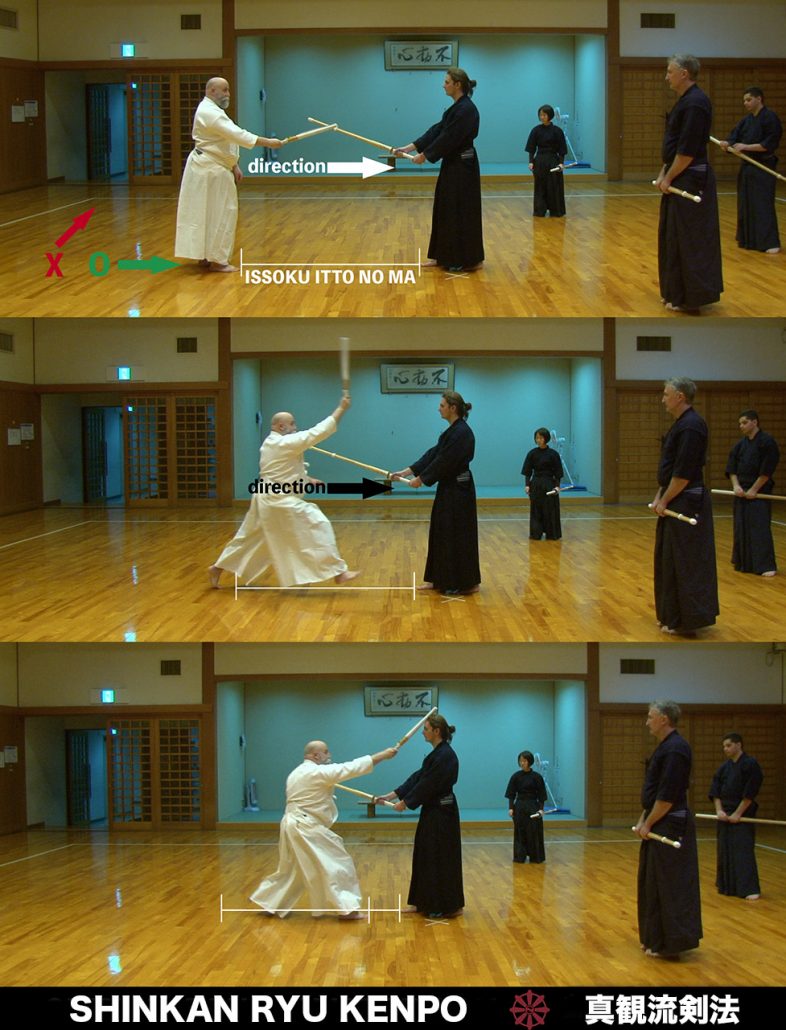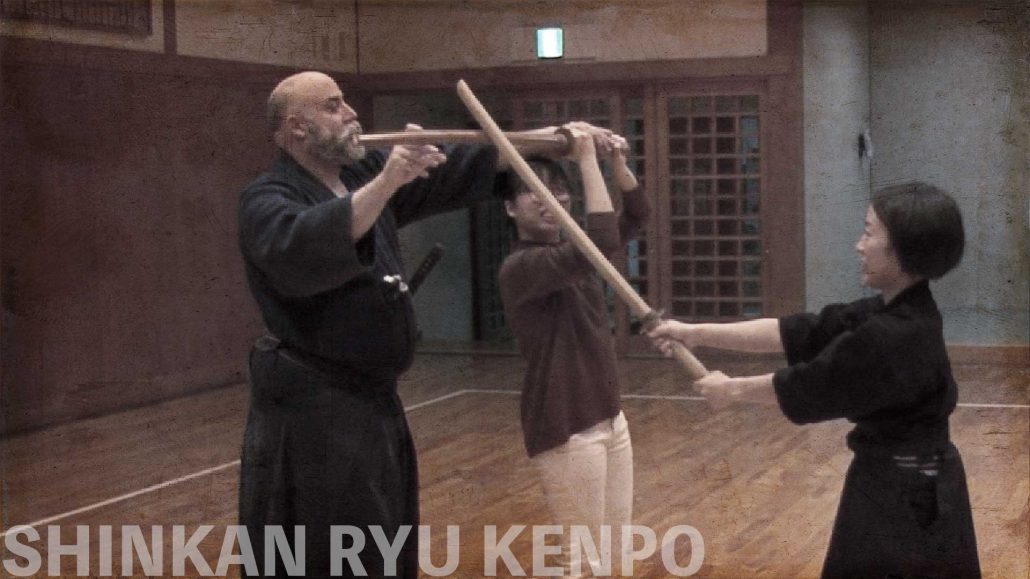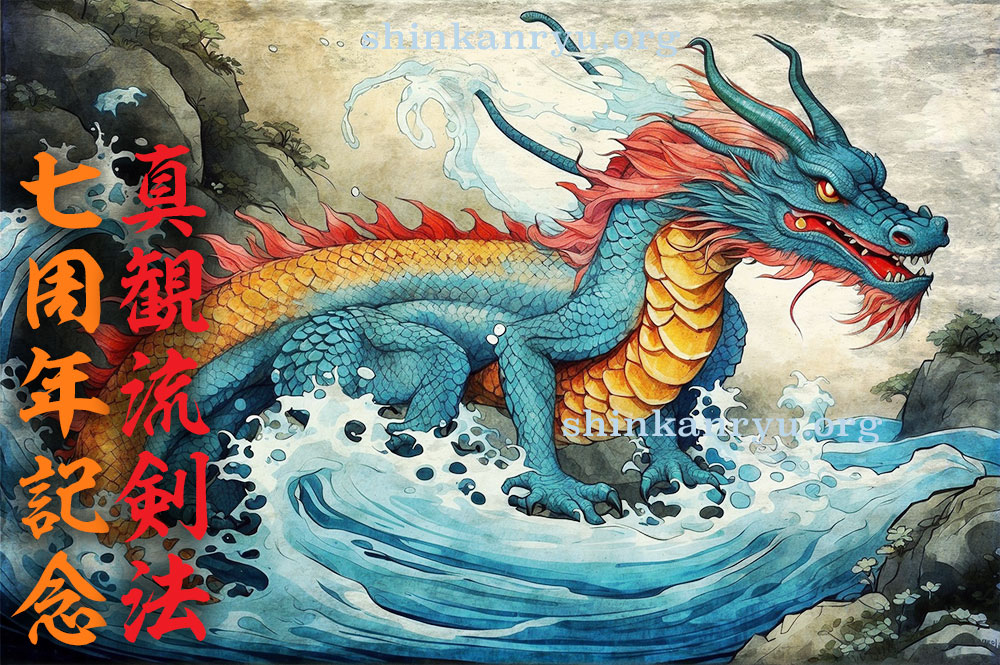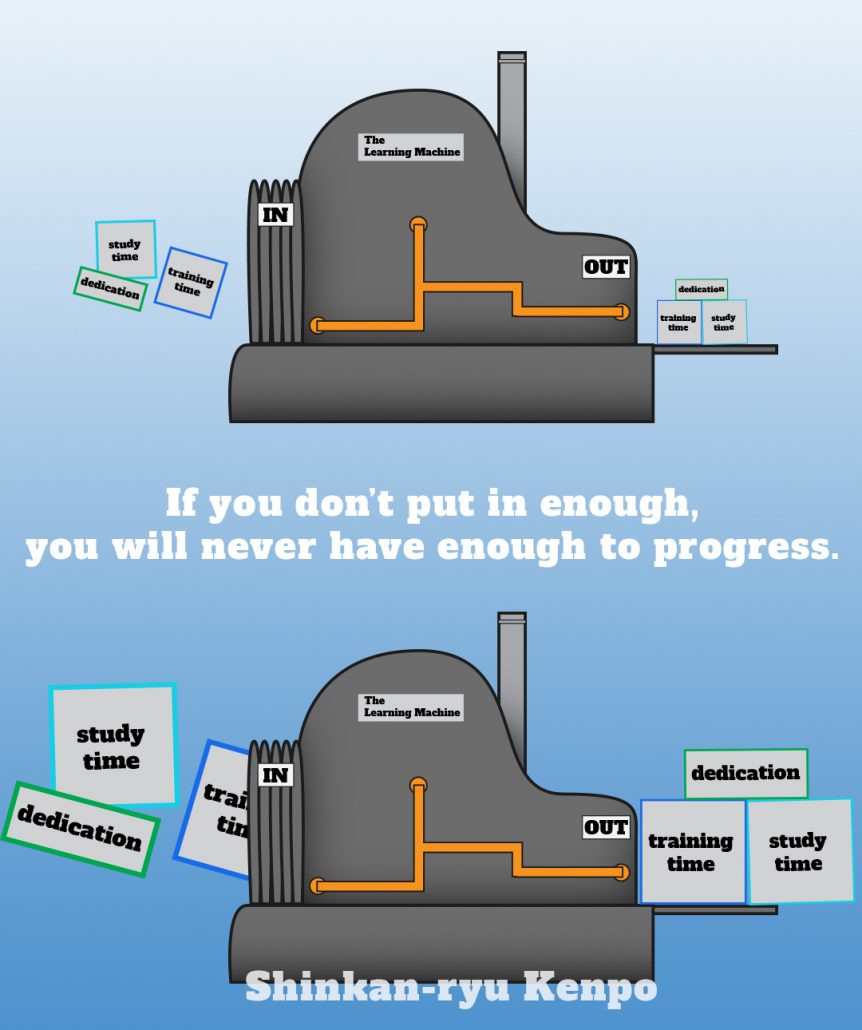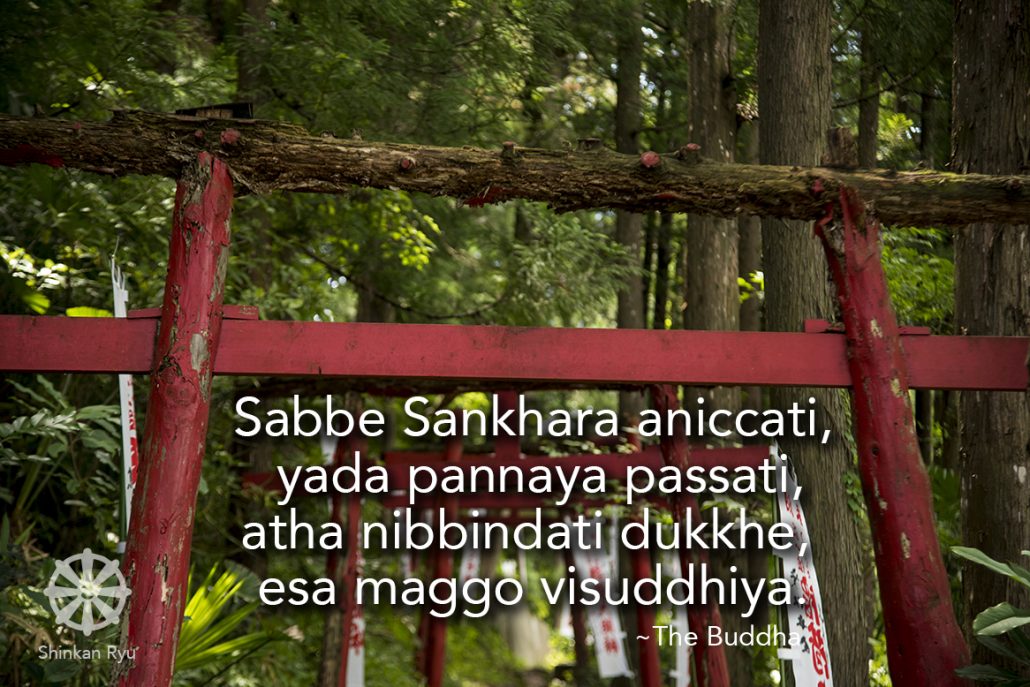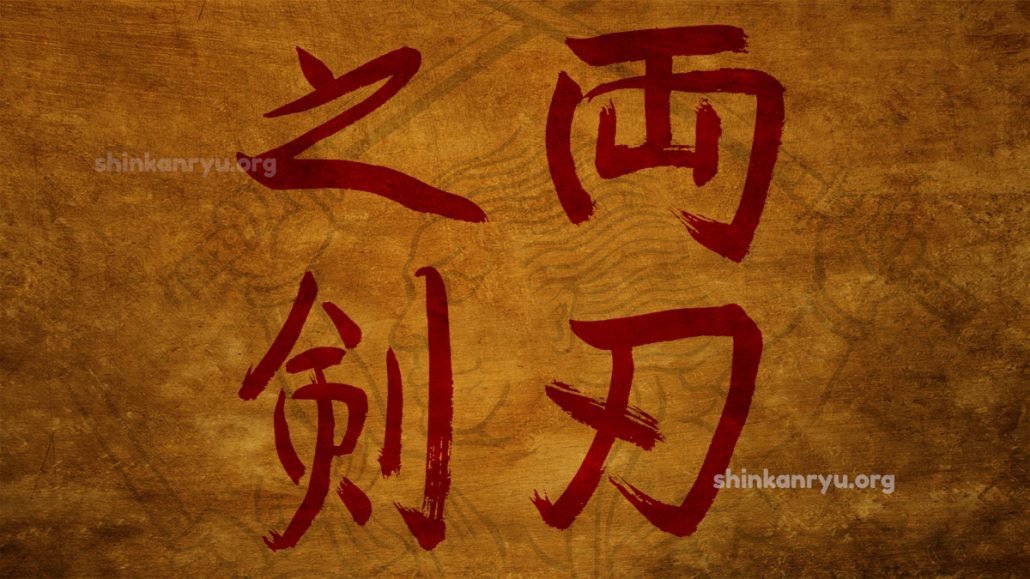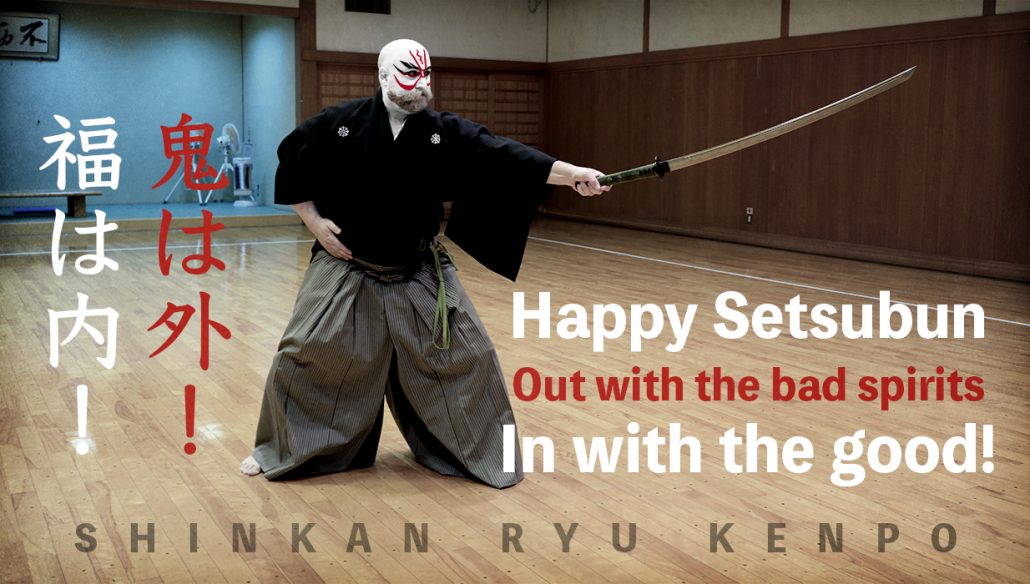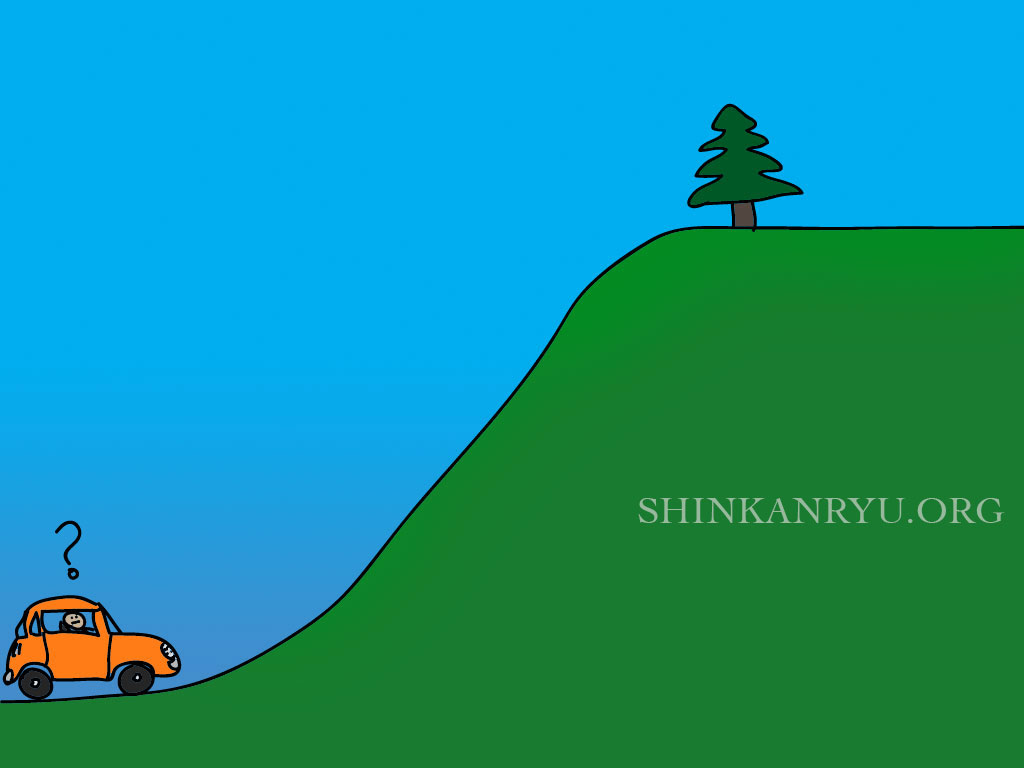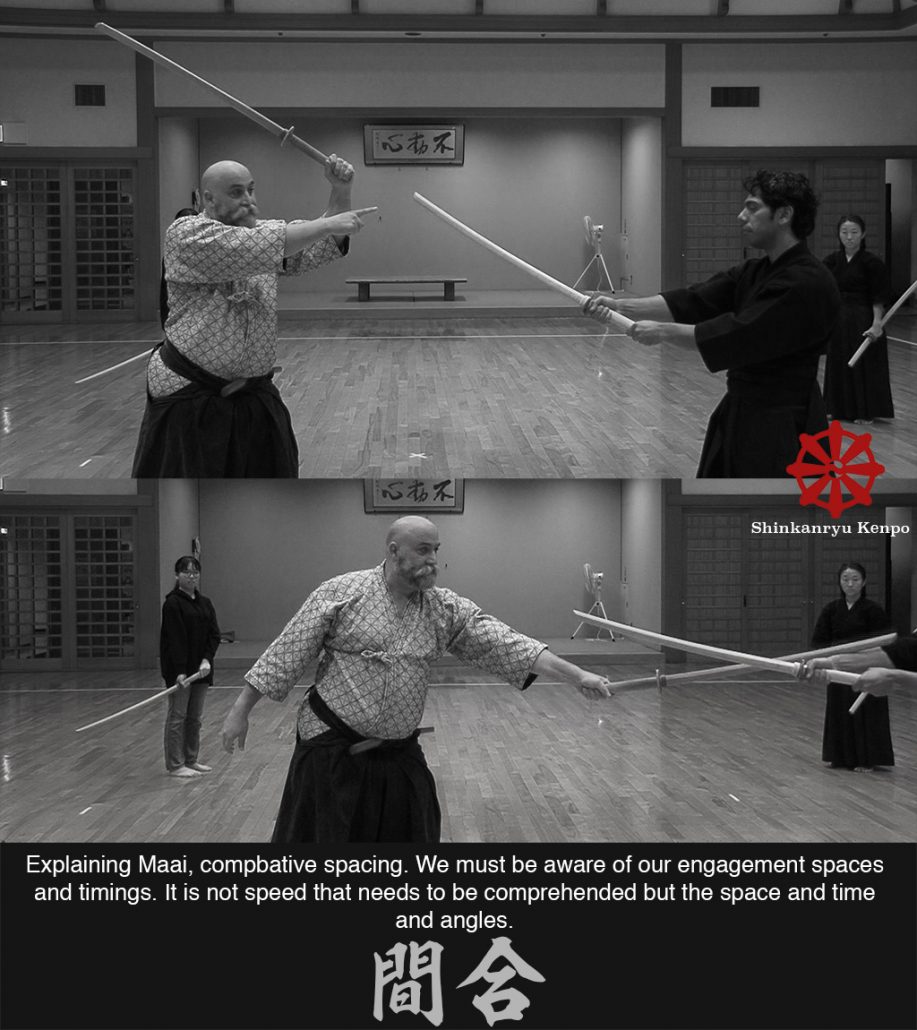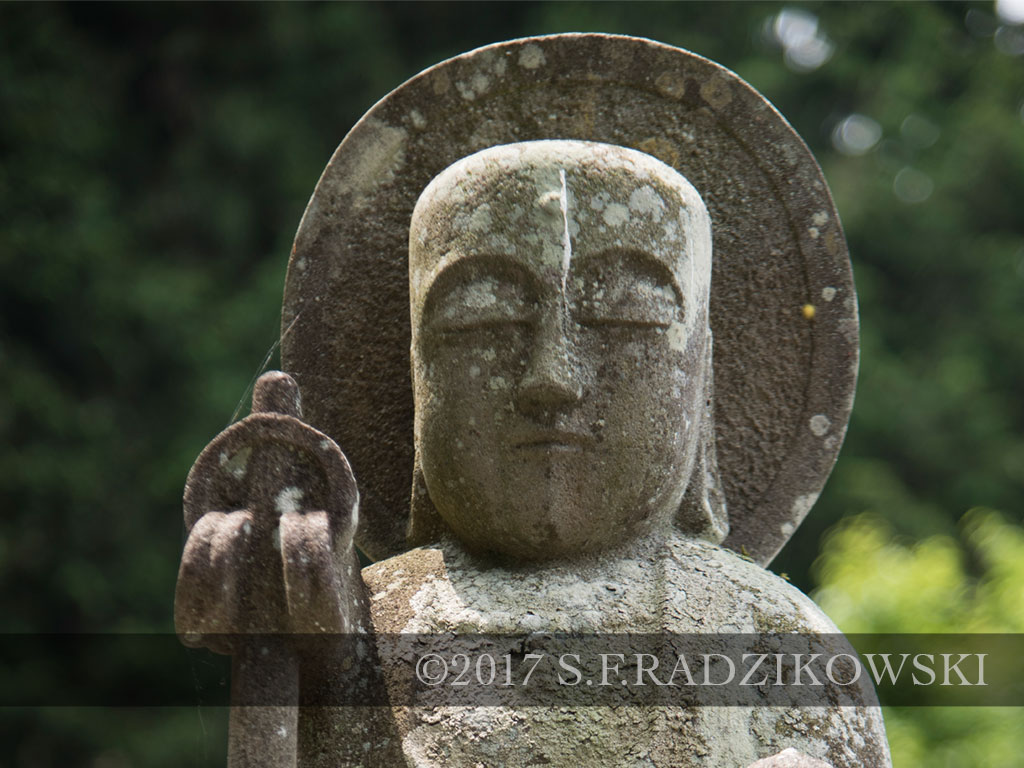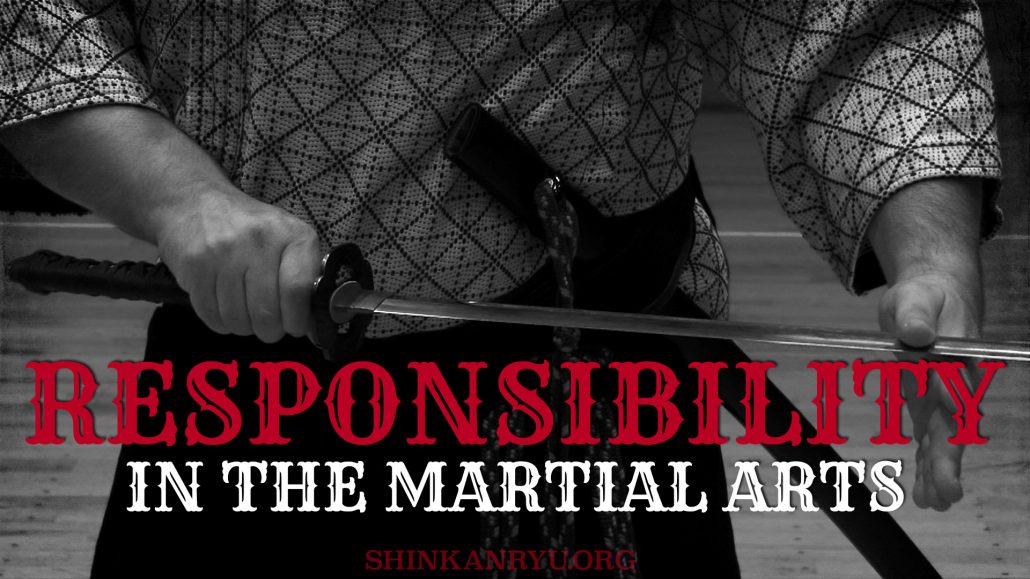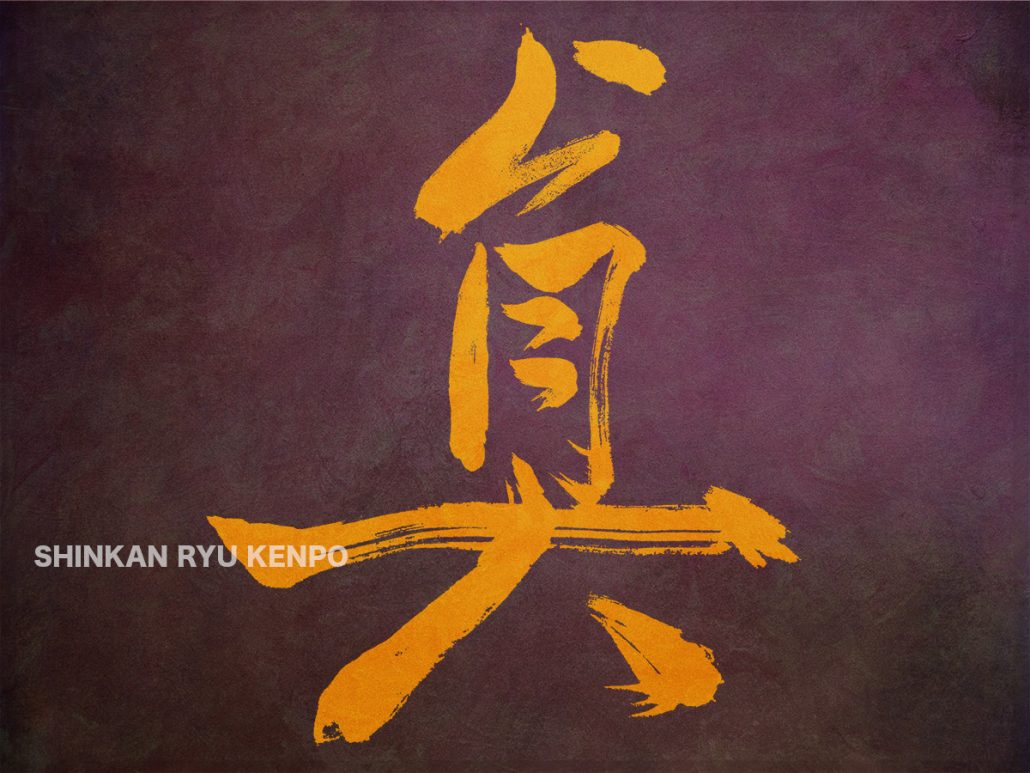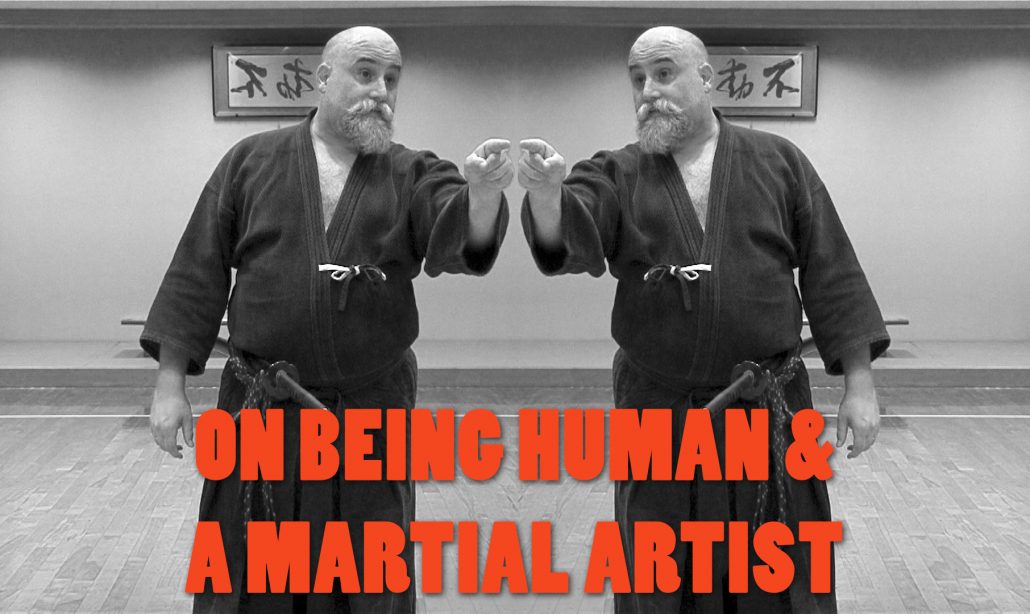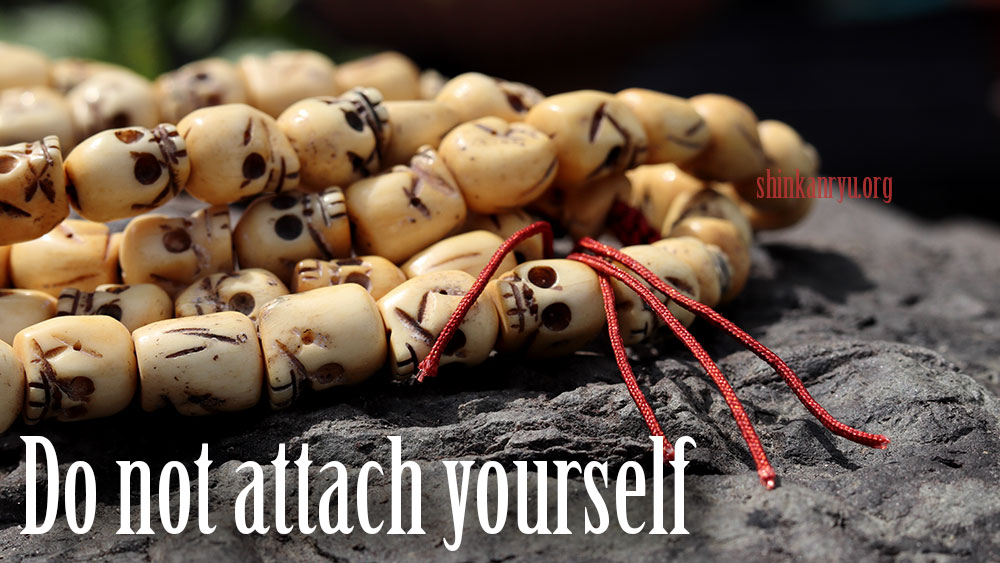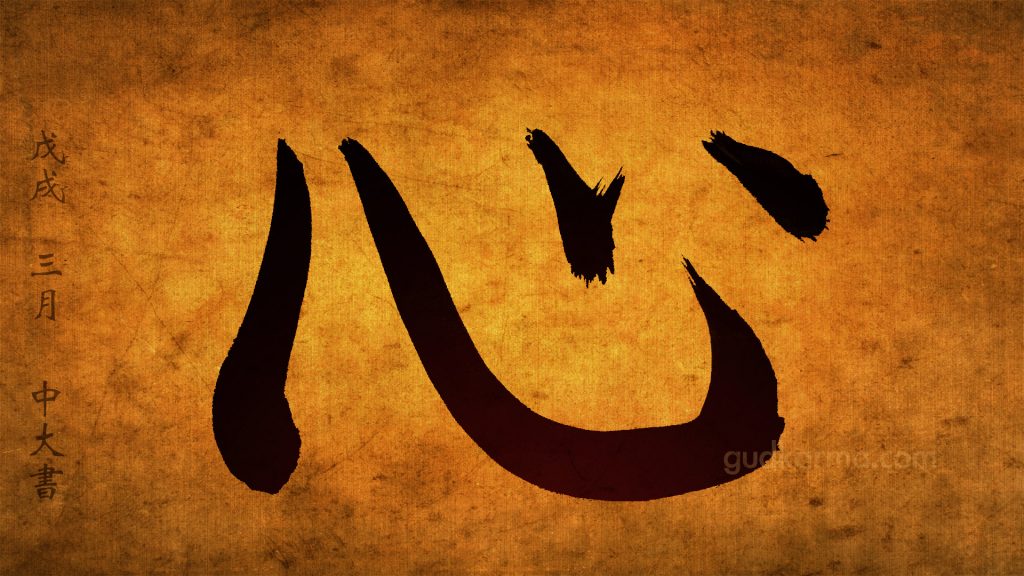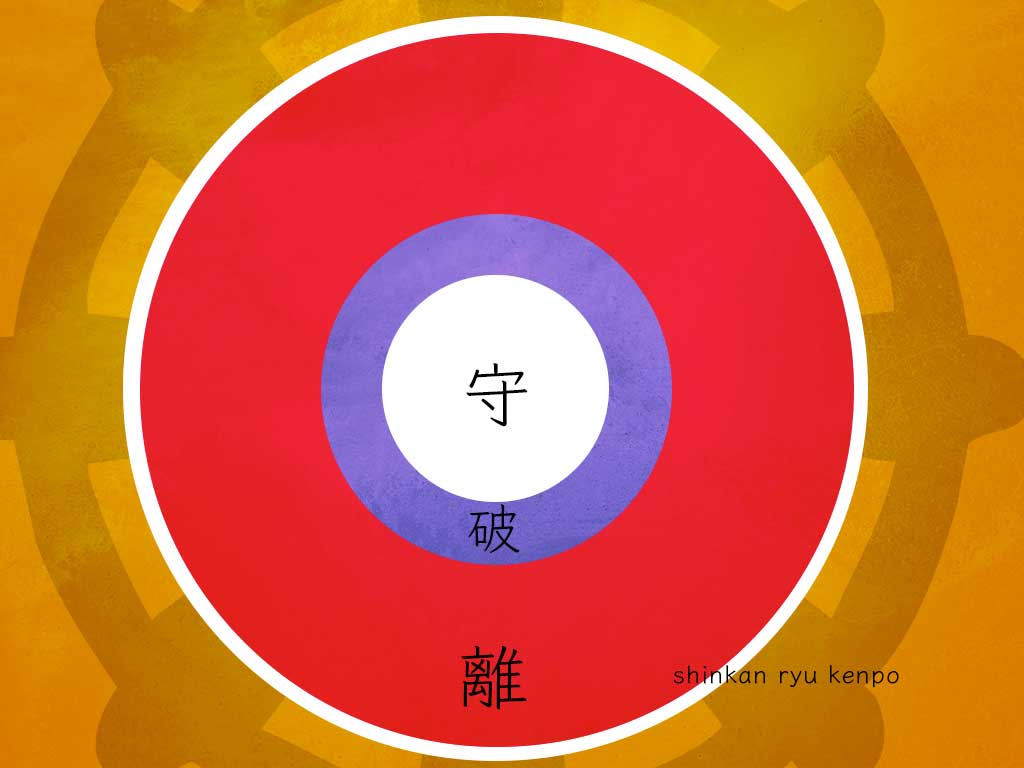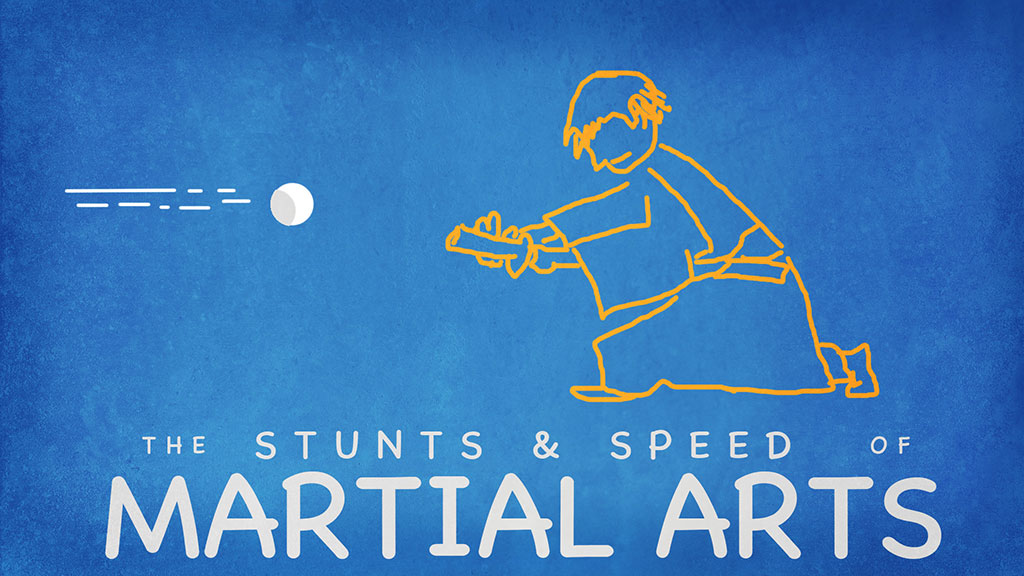Iaijutsu and iaido are components of kenjutsu 剣術, the arts of the sword. Iaijutsu, iaido are specific techniques used to draw the sword from the saya (sheath). It is also called battōdō or battōjutsu抜刀術.
The suffix of jutsu 術 means techniques or the art of. Batsu 抜 or nuku means to pull. Battōjutsu means the art of pulling out the sword.
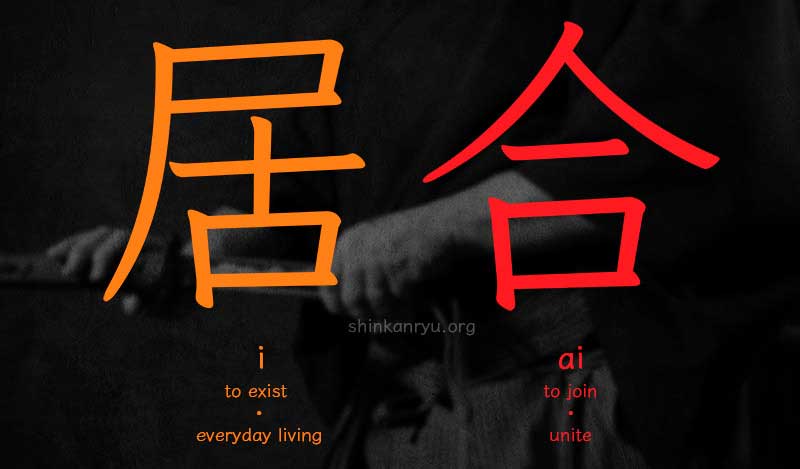
Iaijutsu, on the other hand, has a different connotation than battōjutsu. Iai 居合 is made up of two characters, the first I 居. This character means to be or exist and also has a broader meaning of sitting. The second character, ai 合 means to meet or unite or join.
There is no direct translation into English of Iai. The art of using the sword in everyday situations is probably the best way to think of it. Iaijutsu does not mean the seated forms solely. There is also standing, which is called tachi-iaijutsu 立居合術.
Origin

No single person can claim the title of the creator of iaijutsu. Although bushi such as Iizasa Choisai Ienao of Tenshin Shōden Katori Sintō-ryū (14th Century) and Hayashizaki Jinsuke Shigenobu of Shin Musō Hayashizaki Ryū (16th Century) significantly contributed to its spread and popularity within koryū.
Iaijutsu and iaidō are done from various postures from seated to standing. Although the character 居 has the older meaning of sitting, iaijutsu contains the feeling of being at "rest" in a non-battlefield situation and is more relating to that of everyday life. Sitting in a meeting, or having a meal or being served tea, etc. etc. Walking down the street is a part of this "existing in everyday life" idea.
Iaijutsu is concerned with the art of using the sword from its rested position in the saya. The person studying iaijutsu learns to deploy the sword for somewhat defensive purposes. In Japanese swordsmanship, these defensive techniques also include acts of getting the sword out to attack as well. Iaijutsu is not purely defensive action. Methods for stealthy or covert attacks are also included in many systems of iaijutsu and iaido.
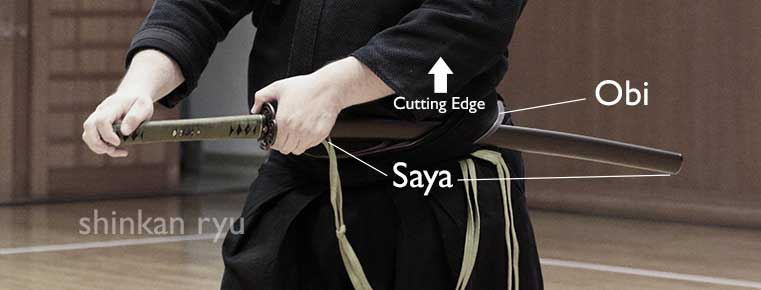
In general, the sword is worn through the obi (belt) with the cutting edge facing up. Starting around the sixteenth century the sword was easily worn through the obi and hakama since many more samurai were not dressed in armor. The sword placed in the obi and straps of the hakama became normal usage. Earlier the sword was worn in a method known as tachi. It with the cutting edge facing downwards. It was suspended by two cords affixed to the saya. It hung much lower than the more modern version of it being in the obi. Having the cutting edge face down in tachi style also puts the handle at a convenient level to draw the sword. Wearing the sword in the obi with the cutting edge facing downwards creates an awkward method of drawing.
The swords (tachi) had also changed more into the katana we know today. The advent of a change in political climate, wardrobe, and utensils such as the uchigatana and katana paved the way for the advent of iaijutsu. The samurai needed a method to use the sword in a different environment.
Forms
Iaijutsu and iaido are done from crouched (iaigoshi), kneeling or semi-sitting (tatehiza), formal sitting (seiza), regular sitting (agura) and standing (tachi) postures. The sword might be in the obi, or it might be on the floor to either side of the practitioner. It might also be done carrying the sword in one hand. There is a myriad of ways different schools approach the art iaijutsu in swordsmanship. The handle (tsuka) and sheath (saya) and sword guard (tsuba) are also used as weapons in some schools in their iaijutsu techniques (waza). Iaijutsu can also contain grappling within its techniques. It is not uncommon to use a kick or a punch or joint locks within the iaijutsu techniques.
©2018 S.F.Radzikowski

ラジカスキー真照
館長Saneteru Radzikowski is the head sword instructor of Shinkan-ryū Kenpō. He lives and teaches Iaijutsu and Kenjutsu from Nara, Japan.
Bujutsu Thoughts
Training in iaijutsu (or any bujutsu) means doing the same thing over and over and...
Making Excuses In Martial Arts
In the dojo, when I hear a student offer excuses to a teacher, I can...
Is Studying Multiple Martial Arts Ok?
Many people study more than one martial art. There can be varied reasons, such as...
Wisdom Martial Arts Keiko & Buddhism
For those that lack wisdom the way is difficult. It is best to consider the...
Maai Combative Spacing
Maai 間合い Combative spacing or maai is important to investigate early on and come to...
How to learn kenjutsu?
How to learn kenjutsu? Learning anything as profound as a martial art needs a teacher....
7 Year Anniversary of Online and In-person Sword Learning
Today marks a significant milestone in our journey — the 7th Anniversary of Shinkan-ryu Kenpo!...
Don’t Fall Into The Honey
You only have a little bit longer to live. The end is coming, whether in...
I Am A Lazy Martial Artist
There is a saying, “You get out of it what you put into it.” It...
Impermanence, The Mind, and the Truth
After every meditation session my teacher, with his eyes still closed, would softly speak in...
The Sword With Two Edges
Today I decided to write the four kanji compound of morohanotsurugi. In English, we might...
Happy Setsubun
鬼は外! 福は内! In our house we dont use beans to chase out the demons, we...
Practice
The car at the bottom of the hill needs a sustained gas pedal to move...
Maai; Combative Space-timing
Teaching maai 間合い, the ideas of combative spacing and timing intervals in kenjutsu.
Is Compassion Important In Martial Arts?
What is compassion? Compassion is a concern for the suffering or problems of others. The...
Martial Arts Responsibility
As a martial arts instructor, or school, or especially if you’re representing an authentic Japanese...
Bujutsu Truth
Be honest. Move with the truth and discard the lies and false facades. Leave them...
On being human and a martial artist
It is difficult to wind through the brambles and thorns of life. It is impossible...
Attachment, Budo & Impermanence
It is worth a lot to be mindful of the ebb and flow of all...
The Martial Arts Heart
Budo values reflection and compassion. When these are not present it is hard to develop...
Shu-ha-ri Budo Learning
Speed, Martial Arts and Samurai Theater
What’s the difference between bugei 武芸 (martial arts) demonstrations and stunts? People are awed by...


